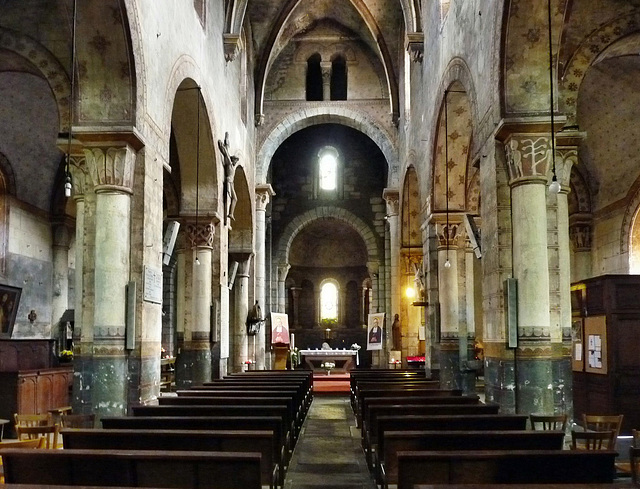Thuret - Saint-Bénilde
Thuret - Saint-Bénilde
Thuret - Saint-Bénilde
Thuret - Saint-Bénilde
Thuret - Saint-Bénilde
Thuret - Saint-Bénilde
Thuret - Saint-Bénilde
Thuret - Saint-Bénilde
Thuret - Saint-Bénilde
Thuret - Saint-Bénilde
Thuret - Saint-Bénilde
Ennezat - Collégiale Saint-Victor et Sainte-Couron…
Ennezat - Collégiale Saint-Victor et Sainte-Couron…
Ennezat - Collégiale Saint-Victor et Sainte-Couron…
Ennezat - Collégiale Saint-Victor et Sainte-Couron…
Ennezat - Collégiale Saint-Victor et Sainte-Couron…
Ennezat - Collégiale Saint-Victor et Sainte-Couron…
Ennezat - Collégiale Saint-Victor et Sainte-Couron…
Ennezat - Collégiale Saint-Victor et Sainte-Couron…
Ennezat - Collégiale Saint-Victor et Sainte-Couron…
Ennezat - Collégiale Saint-Victor et Sainte-Couron…
Ennezat - Collégiale Saint-Victor et Sainte-Couron…
Mozac - Saint-Pierre et Saint-Caprais
Thuret - Saint-Bénilde
Thuret - Saint-Bénilde
Thuret - Saint-Bénilde
Thuret - Saint-Bénilde
Saint-Myon - Saint-Médulphe
Saint-Myon - Saint-Médulphe
Saint-Myon - Saint-Médulphe
Saint-Myon - Saint-Médulphe
Vensat - La Chapelle
Saint-Priest-d'Andelot
Gannat - Sainte Croix
Gannat - Sainte Croix
Gannat - Sainte Croix
Viaduc de Neuvial
Viaduc de Neuvial
Mazerier - Saint-Saturnin
Saint-Hilaire-la-Croix
Saint-Hilaire-la-Croix
Saint-Hilaire-la-Croix
Saint-Hilaire-la-Croix
Saint-Hilaire-la-Croix
Saint-Hilaire-la-Croix
Location
See also...
Keywords
Authorizations, license
-
Visible by: Everyone -
All rights reserved
-
93 visits
Thuret - Saint-Bénilde


The former church of a priory, built 1150/1170, got remodelled quite often over the centuries. This was done not only by architects, but as well by clerics. The church was dedicated to St. Genesius first, then to St. Limin, followed by Saint-Martin. In the 19th century the dedication changed to Saint-Bonnet and some decades ago to Saint-Bénilde.
Standing in the nave, facing east to the choir. The structure is a basilica, with transepts and three apses, what is very common in the area. The church probably had a wooden ceiling in the early days, the vaulting seen today was done in the 15th century. Aymon Gilbert Mallay, the architect of the diocese, "over" restaurated the church in 1864, when he hightened the walls and enlarged the clerestory. Bernard Craplet ( "Auvergne romane") still laments this impact. New as well the large photos on both sides of the altar depicting Saint Bénilde, born in Thuret in 1805 under the name Pierre Romançon.
The title "Le Vezelay de la Limagne", that I found on a local leaflet, is too ambitious. There are interesting carvings (see the capitals) here. Ever since the art history discovered them as specific works of art, they have been a subject in the literature.
B. Craplet ("Auvergne roman", 1992) describes the carvings just as "unskilled". He in general disagrees with Z. Swiechowski ("Sculpture Romane D'auvergne", 1973), who sees this as the work of "naive folk art". A. Gybal ("L´Auvergne, berceau de l´artroman", 1958) describes a specific "Thuret-style" being a totally simplified work of art. Only to be found here. For him, the implification is the result of the artists inspiration. He makes totally clear, that this is not "folk art" ("l`art populaire"), but the result of artistic work of very skilled monks ("moines tres cultives").
Standing in the nave, facing east to the choir. The structure is a basilica, with transepts and three apses, what is very common in the area. The church probably had a wooden ceiling in the early days, the vaulting seen today was done in the 15th century. Aymon Gilbert Mallay, the architect of the diocese, "over" restaurated the church in 1864, when he hightened the walls and enlarged the clerestory. Bernard Craplet ( "Auvergne romane") still laments this impact. New as well the large photos on both sides of the altar depicting Saint Bénilde, born in Thuret in 1805 under the name Pierre Romançon.
The title "Le Vezelay de la Limagne", that I found on a local leaflet, is too ambitious. There are interesting carvings (see the capitals) here. Ever since the art history discovered them as specific works of art, they have been a subject in the literature.
B. Craplet ("Auvergne roman", 1992) describes the carvings just as "unskilled". He in general disagrees with Z. Swiechowski ("Sculpture Romane D'auvergne", 1973), who sees this as the work of "naive folk art". A. Gybal ("L´Auvergne, berceau de l´artroman", 1958) describes a specific "Thuret-style" being a totally simplified work of art. Only to be found here. For him, the implification is the result of the artists inspiration. He makes totally clear, that this is not "folk art" ("l`art populaire"), but the result of artistic work of very skilled monks ("moines tres cultives").
- Keyboard shortcuts:
Jump to top
RSS feed- Latest comments - Subscribe to the comment feeds of this photo
- ipernity © 2007-2024
- Help & Contact
|
Club news
|
About ipernity
|
History |
ipernity Club & Prices |
Guide of good conduct
Donate | Group guidelines | Privacy policy | Terms of use | Statutes | In memoria -
Facebook
Twitter

Sign-in to write a comment.